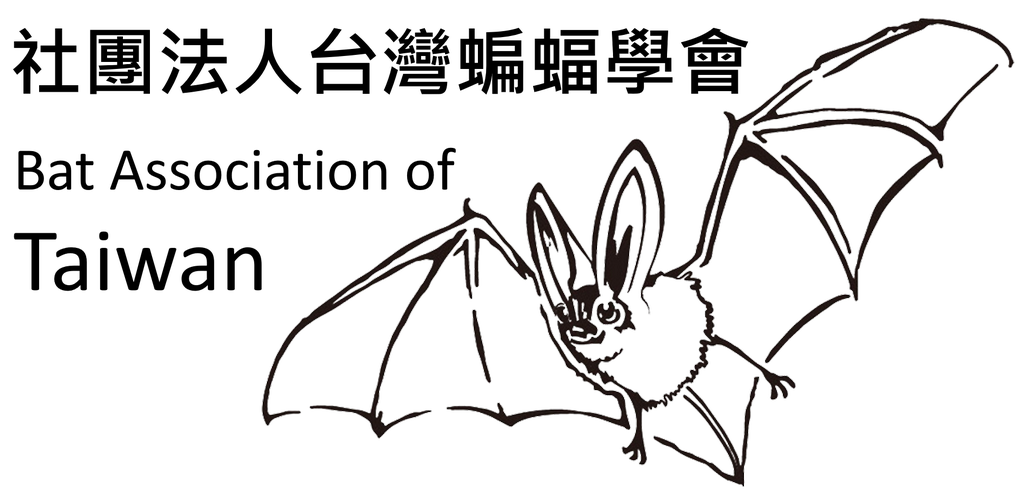蝙蝠研究
2000_臺灣食蟲性蝙蝠飛翼形態之研究_賴慶昌
出版年份:2000
研究生:賴慶昌
分類:碩士論文
題目:臺灣食蟲性蝙蝠飛翼形態之研究
Title:Wing morphology of insectivorous bats in Taiwan
摘要:
蝙蝠的飛翼形態與其飛行速度及棲地利用有關。本研究的目的為探討臺灣地區22種食蟲性蝙蝠飛翼形態與飛行速度間的關係,首先藉由形質測量計算出各種類蝙蝠之飛翼承載量(wing loading)與翼面縱橫比(aspect ratio),並於實驗室中針對18種蝙蝠使用錄影方式記錄其飛行軌跡,並分別計算蝙蝠的起飛速度(initial speed)與自由飛行速度(free flying speed)。其結果為翼面縱橫比與起飛速度(r2 = 0.27,P<0.05)、飛翼承載量與起飛速度 (r2 = 0.85 ,P<0.01)均分別呈正相關。而蝙蝠的飛翼承載量大於11N/m2以上,自由飛行速度的平均值均大於5m/s,亦即飛翼承載量越大的物種,自由飛行速度也會越快。自由飛行速度平均值最大的為皺鼻蝠,速度為7.06m/s,平均速度最慢的是無尾葉鼻蝠,速度為2.98m/s。以主成分分析法(principle componment analysis)分析15個與飛行相關的因子(factor),以成分因子一與成分因子二進行作圖,可將飛翼形態區分為7種,而成分因子一代表的分別為重量與飛翼面積因子,成分因子二代表了飛翼形態因子,其意義分別與飛翼承載量與翼面縱橫比相近。因此,以飛翼承載量與翼面縱橫比作圖所得之四個象限。當蝙蝠種類具有較大的翼面縱橫比、飛翼承載量,則有較快的飛行速度,如:皺鼻蝠與臺灣葉鼻蝠等;而翼面縱橫比較大與飛翼承載量較小的蝙蝠,其飛翼形態適合進行長距離的遷移(migration),如:摺翅蝠;而翼面縱橫比與飛翼承載量較小的蝙蝠,其飛行速度比較慢,如:小蹄鼻蝠、無尾葉鼻蝠,則生活在森林內較為龐雜的環境;而翼面縱橫比較小與飛翼承載量較大的蝙蝠,則有於森林下層的複雜環境中,具有較高的飛行速度。
Abstract:
The wing morphology of bats is related to flying speed and habitat utilization. The purpose of this research was to study the relationships between wing morphology and flying speed of Taiwan's insectivorous bats. In this study, by measuring the morphological characters to estimate wing loading and aspect ratio and to track 18 species of bat flights in the laboratory by videorecorder to calculate initial and free flying speed.
The values of aspect ratio and wing loading were related to initial speed (r2=0.27, P<0.05; r2=0.85, P<0.01, respectively). When wing loading greater than 11N/m2, the mean value of free flying speeds will great than 5m/s. Of the 18 species of bats whose flying speed have been measured in this study: the free-tail bat, Tadarida sp. is the fastest one (7.06 m/s) and the slowest is the Formosan tailless leaf-nose bat, Coelops frithi formonsanus (2.98 m/s). Based on principle component analysis on 15 factors of bat wing morphology, and showed seven different wing forms in a digram of first and second principal components of wing morphology (identified as measures of wing loading and aspect ratio).
By analysis wing loading and aspect ratio, the 22 species of bats showed four types of flight pattern. Bats will display faster flying speed when wing loading, and aspect ratio are large, as in free-tail bat, Formosan leaf-nose bat, Hipposideros terasensis; Bats will display migration when wing loading is smalll and aspect ratio is large, such as Japanese long-winged bat, Miniopterus schreibersii. From field observations, these fast flying species also appeared in open spaces. Bats have small wing loading and aspect ratio, will display slower flying speed, such as the Formosan lesser horseshoe bat, Rhinolophus monoceros, and Formosan tailless leaf-nose bat, Coelops frithi formonsanus will fly in cluttered habitats such as forests. Bats will display faster flying speed in cluttered habitats when wing loading is large and aspect ratio is small, such as Rhinolophus formosae.
